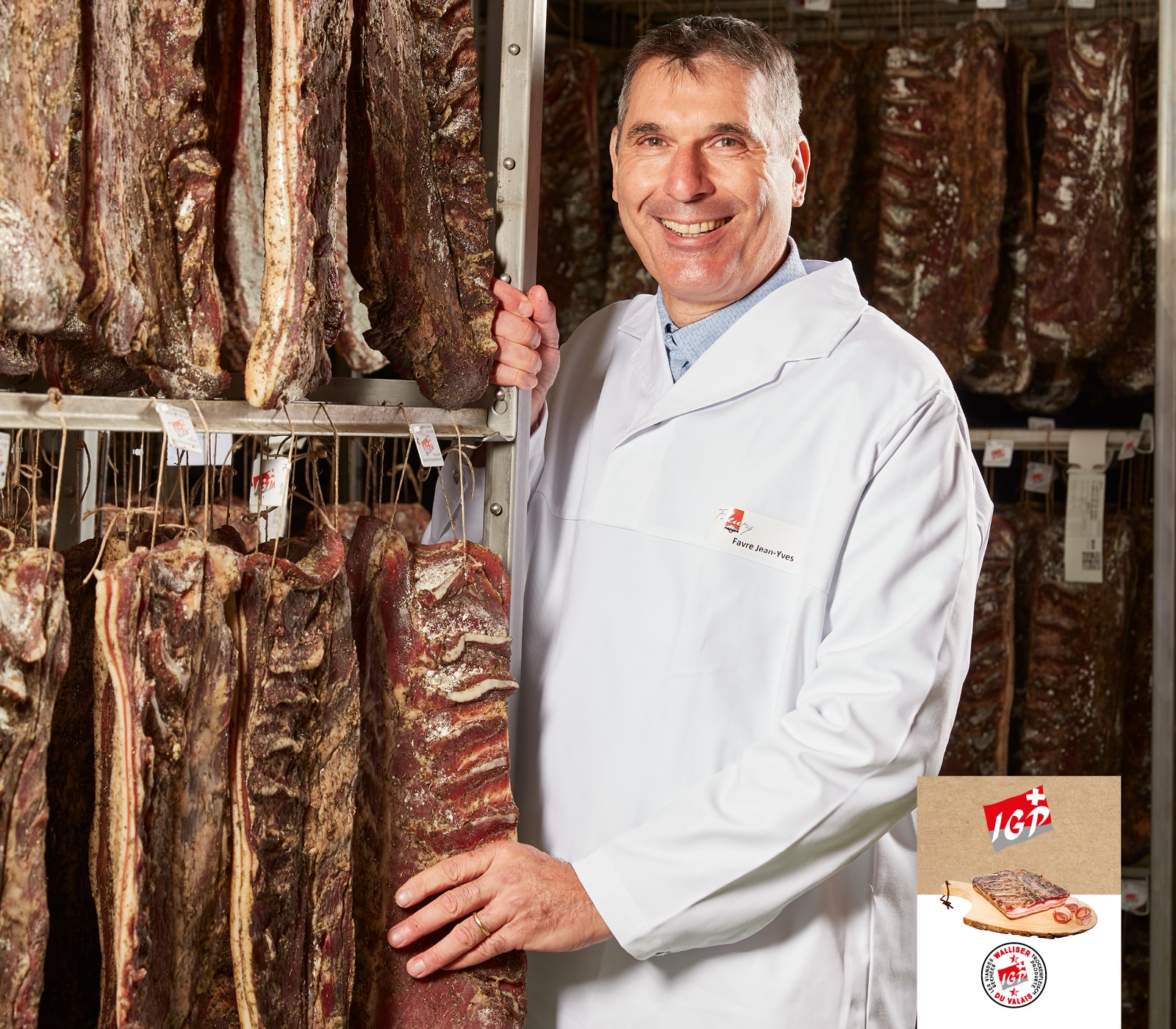
Walliser Trockenspeck PGI
Product description
PGI (Protected Geographical Indication) Valais bacon consists of the breast of pigs raised exclusively in Switzerland.
Registration
22.05.2015
contact
Association des producteurs de Viandes séchées du Valais
Postfach 96
1964 Conthey
T 027 345 40 10
cvagri(at)agrivalais.ch
www.trockenfleischwallis.ch
wallisertrockenfleischprodukteigp
wallisertrockenfleischigp
Geographical Region
The geographic area in which Valais bacon PGI is processed is the Canton of Valais. The birth, raising, slaughter and cutting of the pigs take places exclusively in Switzerland.
Production
The breast of the animal is used for the production of bacon. Cut into rectangular slabs, the pieces are first rubbed with a mixture of salt, pepper, spices and aromatic plants, the details of which are a jealously guarded secret of each producer. The pieces are then placed in brine in large tanks in a cool place, where they become impregnated with the curing mixture for several days. The drying phase follows: the slabs of bacon are hung from a string in a cool and well ventilated spot. The minimal duration of the processing of the bacon, including the salting, drying and aging phases, is four weeks. In the course of this drying process, the bacon loses at least 30 % of its weight, compared to the fresh product. Pressed several times during the drying phase in order to give them their rectangular shape, the slices of bacon have a final thickness of about 3 cm. Valais bacon PGI is never smoked.
History
The practice of drying meat products goes back to at least the 16th century in Valais. At that time, though, pork production was not yet well developed in Valais. At the end of the 19th century, this situation changed. Many peasant families raised pork for their own use and processed it themselves, ensuring its preservation through drying. The tradition that consisted of "killing the pig" in every family, at the end of autumn or beginning of winter, remained very much alive until after the Second World War. Until the middle of the 20th century, the entire pig – and not just the ham – was salted in a wood vat, then dried if possible in a raccard, a type of chalet used to store food in the alpine pastures of Valais, open to the cool, dry air of the mountains. Starting in the 1950s, ham underwent the same evolution as dried beef. Household production declined, while professional production developed thanks to the know-how acquired over generations.



